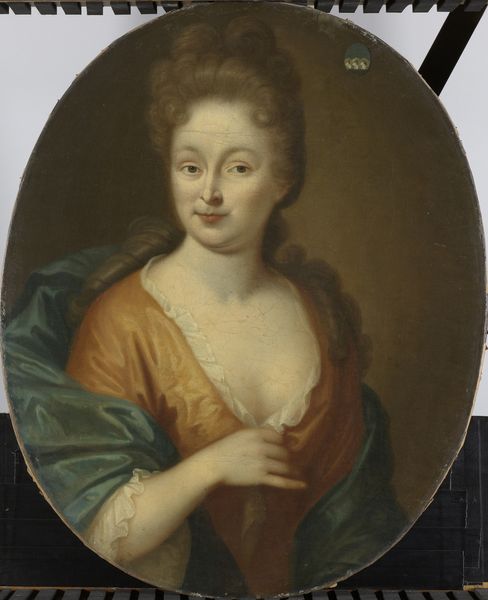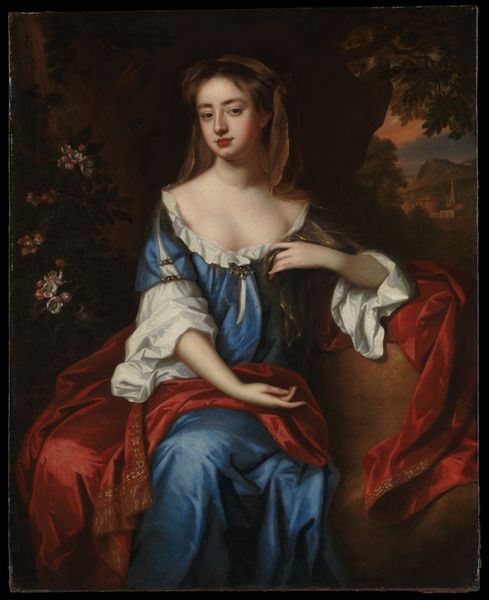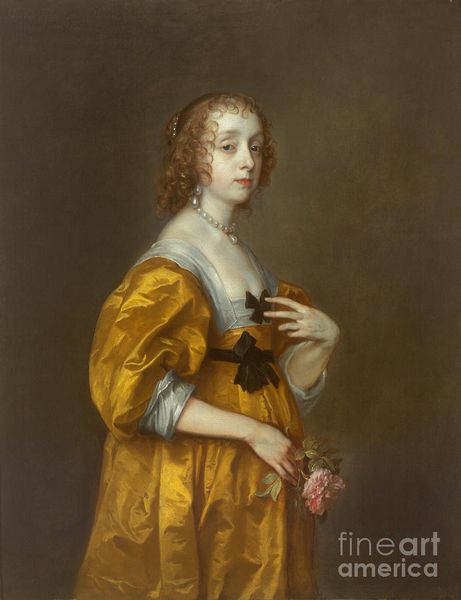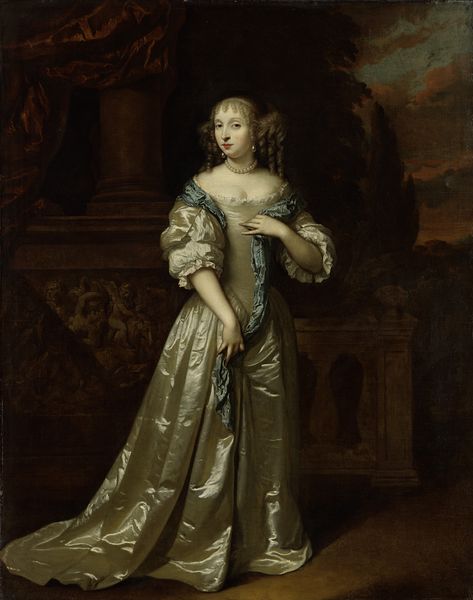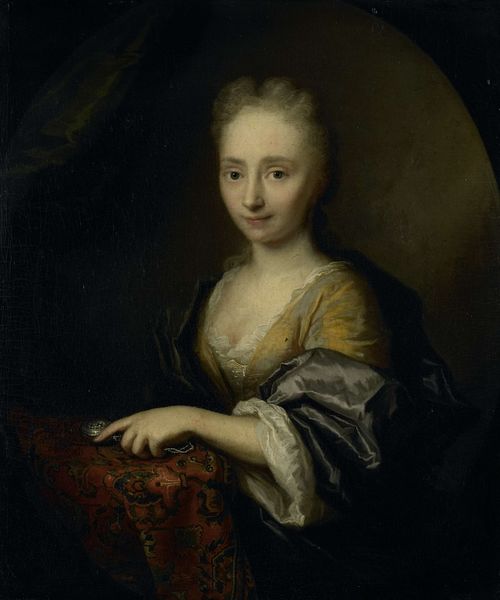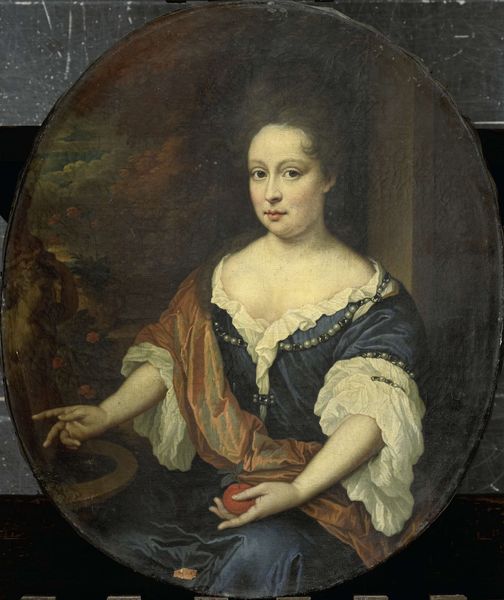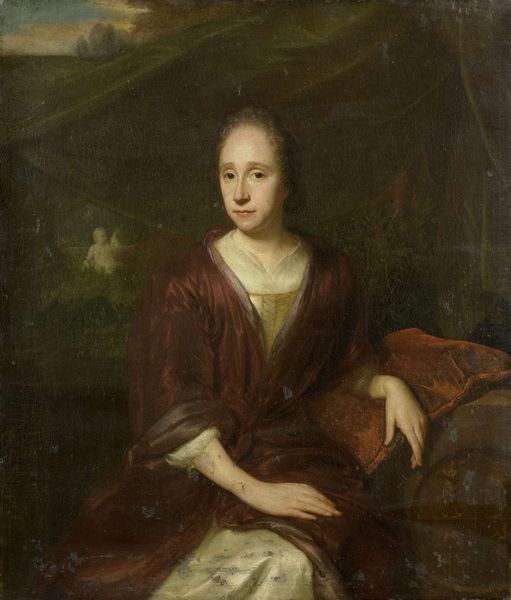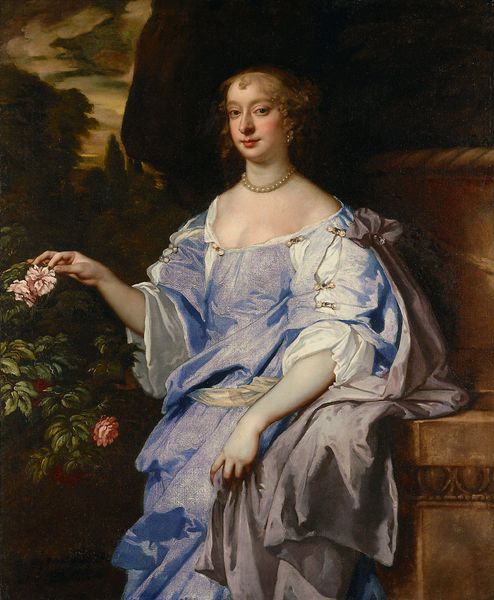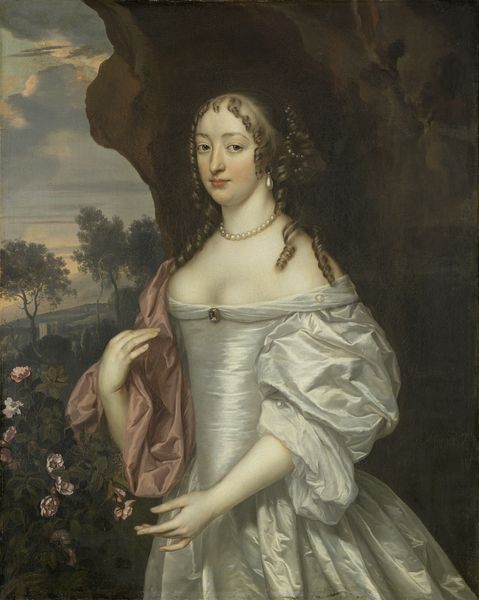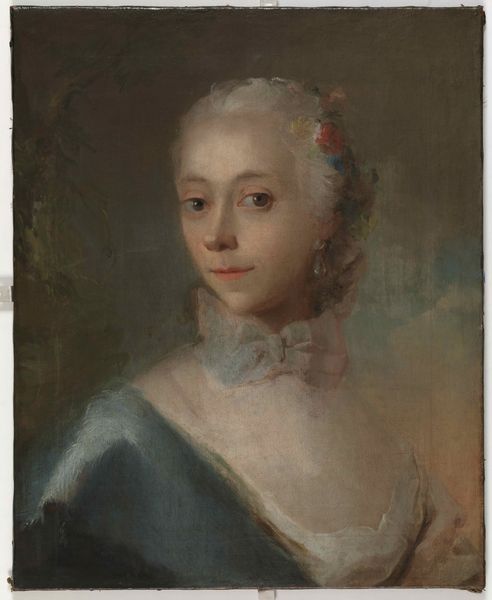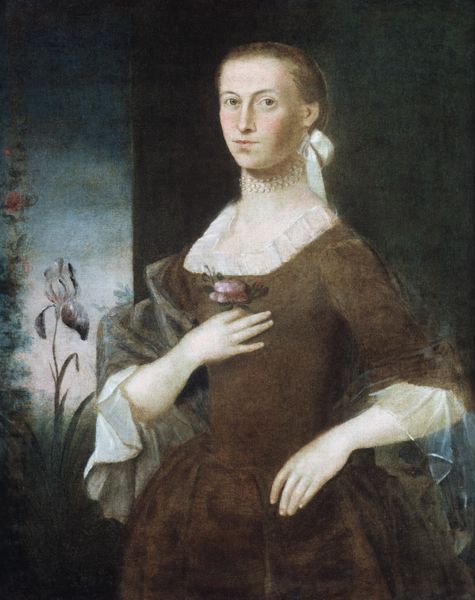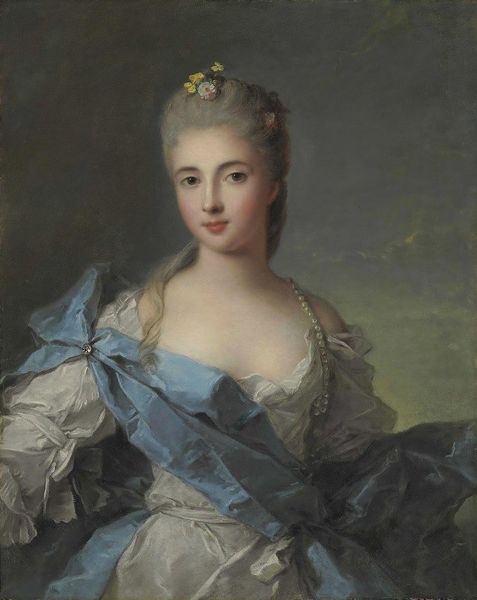
oil-paint
#
portrait
#
baroque
#
oil-paint
#
oil painting
Dimensions: height 50 cm, width 42 cm, depth 7.5 cm
Copyright: Rijks Museum: Open Domain
Editor: So, this is "Justina Johanna Ramskrammer, Wife of Isaac Parker" painted in 1734 by Philip van Dijk, using oil paint. I'm struck by the sort of staged naturalism – she's posed in a garden, but it all feels very deliberate. What do you see in this piece, from a historical perspective? Curator: It's a fascinating window into the social expectations of the time, wouldn't you agree? The portrait format itself was, of course, a symbol of status. Look at how she's positioned, seemingly at leisure in a garden. That’s not accidental; it’s conveying prosperity, access to leisure, and a cultivated sensibility. But the 'natural' setting is very controlled, very much a display. Editor: Definitely, it's all very carefully curated. How do you mean controlled display? Curator: Well, consider the context. This is the Dutch Golden Age's later phase, where ideas about class and societal roles were becoming more fixed and more visually asserted. It wasn’t simply enough to *be* wealthy; one had to perform wealth. And a portrait like this, displayed in the home, would have served as a constant reminder of the sitter's and her family's position. It's also a reflection on how gender and wealth intersect. Who gets memorialized and why? Are women given a different kind of attention compared to male portraits of that time? Editor: That's so true; it’s interesting to think about the performative aspect. The painting's not just about capturing her likeness, but about showing her social role. So, the art becomes a symbol of socio-economic factors of that moment? Curator: Precisely! Art here operates almost like propaganda, reinforcing particular ideals. The politics of imagery at work! It's a reminder that what we see in a museum is often the product of very specific historical and social forces. Editor: I never considered Baroque art in such socio-economic terms! Thank you! Curator: My pleasure. It's all about recognizing the conversations art engages with, and how museums like the Rijksmuseum become the spaces where those discussions continue.
Comments
No comments
Be the first to comment and join the conversation on the ultimate creative platform.
